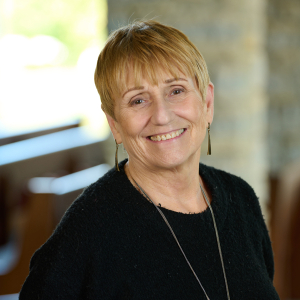Ministry Musing
By Donna Kelly

“It’s the most wonderful time of the year”, so the song goes. Christmas is a time of celebration and joy for some people. And maybe it used to be the happiest time of year for you as well, but for whatever reason, not this year. Sometimes all Christmas seems to do is remind us. Remind us that things aren’t the way they used to be, that they may never be the same again, and we can feel like we are lost.
And that’s no surprise because if you think about it, the way we celebrate Christmas in our culture is all about the past and what things used to be like. In a way Christmas is all about the past; our customs, the joy of our
childhood, our favorite movies, all of which is great fun, but it’s no wonder that when things change, Christmas seems to make us yearn for the past. the “good old days” and we just want the Christmas spirit back, the spirit we used to have.
We may even feel lost in a sea of celebration. That makes me think of the parable of the lost sheep we heard about earlier this year. In this story Jesus teaches us that God is like the shepherd who values each sheep in the flock. God treasures every child of the family. When one goes missing, whether by choice or by experience, God goes into search mode because that is part of the very nature of God.
And yet, some of us may feel far away and lost. What’s missing can seem much more acute at Christmas. While we may wish that Christmas would be the way it was in the past, what used to be doesn’t come back. We are in the present, the right now.
So how can we celebrate Christmas this year?
We can celebrate the true meaning of Christmas which isn’t found in traditions and special foods, in gifts and Christmas Carols. The true meaning of Christmas is a promise that God made to us, a promise God is fulfilling now; to always be with us. The promise that the people who lived in darkness would see light. The promise was never that things would be the way they used to be, but a promise that there can be new hope and new joy.
For the moment, think beyond Bethlehem, beyond the angels and the shepherds, the Magi and the star. It’s a beautiful story, an important story, a story of our faith. And if that story brings us comfort, then by all means we need to cherish it. But that story is about the past, and Christmas is about the present. The true meaning is even bigger than that story; the deepest meaning is closer to us than that.
In reality, Christmas isn’t only about the baby Jesus born over 2000 years ago; not really, not directly. Christmas is about God
coming to us; coming into our lives, then yes, but also here and now, coming into our hearts today.
It’s about God tenderly gathering us in his arms, easing our burdens, our lostness, giving us life, forgiving us, gently enabling us to forgive ourselves and others; helping us to let go of our anger, our pain, our despair. Christ is born in us and among us today. The miracle of Christmas this year, just might be that God is opening our hearts to new hope, new light, new joy, new life.
And I invite you to trust that Christ is being born in you today, and that Christ is with you today, and every day and will bring you that hope, light, peace and life.
Donna Kelly
Contact Donna at Donna at: donna@sotpmail.com
